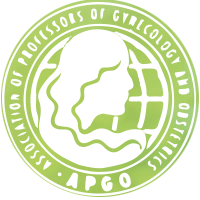Instructional Technology in Medical Education
By Julie B. Covarrubias, MEd, EdD, University of Alabama at Birmingham, and Rupa DeSilva, MD, University of Oklahoma-Tulsa, and the APGO Electronic Resources Committee (ERC)
The impact of technology has changed traditional medical education and opened the doors to many new teaching approaches and opportunities for medical educators and learners. With change comes significant challenges…
Many educators today did not grow up in the computer age, as did their learners. This gap results in learners expecting use of electronic tools, causing some medical educators to feel pressure given their minimal experience with technology. For these teachers, it is very easy to feel overwhelmed with the new face of education. It is also easy to become captivated by the interactivity of the tech tool and overlook the importance of effective integration into the learning environment. To counteract these issues, educators must gain a competence for the resources available as well as understand effective implementation and teaching strategies for each tool.
Medical education resources range from tools as complex as simulation, to virtual patients/cases with multimedia embedded, to synchronous (e.g., web conferencing, chat rooms, white boarding) and asynchronous (e.g., blogs, streaming video, email) communication tools. The most used delivery devices for educational resources include simulators/models, computers, and handhelds (i.e., tablet and Smartphone). When effectively integrated into the educational environment, tech-based tools can help to facilitate learning by reinforcing, advancing, and deepening both knowledge and skills. Technology can also be valuable in providing immediate feedback and assessment of learners’ progress, which then can promote directed education based on areas where a learner is weak. But, how can these technology tools be effectively integrated into the curriculum to educate the future generation of physicians?
Educators must first recognize that technology is merely a tool/resource that supports education. It should not define the education that teachers provide to learners, nor does it promote the highest quality of learning and assessment when used alone. Thus, optimal use of tech-based tools requires thoughtful integration into the curriculum. Educational objectives need to be clearly defined for the learning experience first and then the appropriate tools should be selected to supplement the objectives. The order should not be reversed.
APGO has taken a lead in helping to support medical educators with the optimal integration of instructional technology. Workshops and sessions offered at the annual APGO Martin L. Stone, MD, Faculty Development Seminar and the joint CREOG & APGO Annual Meeting focus on overcoming barriers for those with limited awareness of available resources and integration strategies. This is achieved through highlighting the most effective resources available and the newest, cutting-edge technologies. APGO educational sessions strive to take the fear out of the tech part of education. Additionally, a host of educational resources such as e-learning modules, which have been evaluated are supported by the APGO leadership, are available through the APGO website.
To find out more about the seminars and meetings as well as gain access the educational resources, visit the APGO website.
- Meetings: www.apgo.org/meetings
- Educational Resources: www.apgo.org/education


